The Nahual
written by Ignacio Ochoa
In the Mesoamerican cosmology, the word nahual signifies “moment of radiance.” It refers to the essence or the spirit of a person, animal or thing, living or dead. This spirit is believed to function as the protector of a person, animal or plant. It is believed that humans have an animal spirit counterpart, received at birth, which accompanies them through life.
The nahual is thought to help individuals in difficult moments when they need protection or have important decisions to make. Often represented in the shape of a stone, a nahual can use its power for good or for evil, depending on its personality. No one can capture a nahual; it always escapes and transforms into something else. During any rite of passage in life, one’s nahual is present.
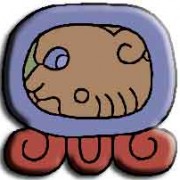 I found out about the nahual when I was a teenager. It was my 1979 school vacation and I was working on a relative’s farm in Quetzaltenango, with two coworkers who had the same name: “Sebastián.” Unlike me, they were from indigenous communities. One day, they invited me to their homes in San Andrés Xecul, Totonicapán. I was so happy being there around the fire on the earth floor, listening to the Maya-K’iche’ language spoken by them and their families. After dinner, they invited me to visit their church, since that day was the festival of San Andrés Xecul.
I found out about the nahual when I was a teenager. It was my 1979 school vacation and I was working on a relative’s farm in Quetzaltenango, with two coworkers who had the same name: “Sebastián.” Unlike me, they were from indigenous communities. One day, they invited me to their homes in San Andrés Xecul, Totonicapán. I was so happy being there around the fire on the earth floor, listening to the Maya-K’iche’ language spoken by them and their families. After dinner, they invited me to visit their church, since that day was the festival of San Andrés Xecul.
We walked there under the moonlight; the illuminated, decorated church was majestic, with a constant stream of people coming and going. In church, the men removed their hats and proceeded on their knees to the main altar, praying all the way to the famous Black Christ—a statue of Jesus made of dark wood—that holds a special appeal to Guatemala’s indigenous peoples. The women did the same with the children, and I followed them.
Later, we left the church and crossed the patio to the priest’s house – he was a Catholic priest who was also Maya K’iche’, and respected both Catholic and Mayan beliefs. This old man, wearing a traditional sarape and hat from the town of Momostenango, welcomed us and invited us to sit around the kitchen fire. The two Sebastians immediately went to touch a small stone located on a special altar, surrounded by candles, flowers and a clay bowl with burning pine resin incense (copal). I later learned that this stone was a nahual.
They took their time praying before the stone. In the Mayan tradition, one must properly address a nahual. To do otherwise would bring bad luck. The priest started speaking in K’iche’ with my friends and asked me where I was from. He asked where I was born, where I was studying, how I had met the two Sebastians, and where my parents and grandparents were.
With all of these questions, I suddenly felt far away from my hometown and family, amazed at how culturally diverse Guatemala is and how distant we Guatemalans are from each other—sharing the same territory but separated by volcanoes, mountains, rivers, lakes, valleys, languages and customs. I introduced myself by talking about the village of Quiriguá, where I was born, and where my parents and grandparents were born.
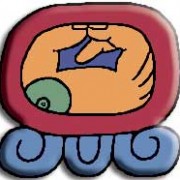 The priest began to discuss many things I didn’t know about the religious significance of the famous Mayan altars at Quiriguá. He asked me what more I could tell them about Quiriguá. Suddenly, I remembered something from my childhood.
The priest began to discuss many things I didn’t know about the religious significance of the famous Mayan altars at Quiriguá. He asked me what more I could tell them about Quiriguá. Suddenly, I remembered something from my childhood.
The only other thing I knew was that there was said to be an underground tunnel underneath Quiriguá. My grandfather once showed me the entrance, telling me that it went all the way to Copán, Honduras—another sacred Mayan site.
I told them a story I had heard about a man named Don Chequel, who had allegedly crossed the tunnel after being enchanted. It was said that he followed a beautiful girl (a trickster nahual) into the tunnel, but got lost inside the tunnel for years and became deranged, or at least, people thought he was crazy with his talk of secret underground tunnels. Twenty years after he first disappeared from Quiriguá, he showed up in town.
One night, Don Chequel appeared, knocking at my grandfather’s door. Grandfather noticed that the dogs didn’t bark that night (believed to be a sign of ghosts) and was surprised at the man’s long, unkempt, dirty hair. After talking a while, he recognized it was Don Chequel and offered him a job on his farm.
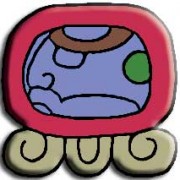 The man repeatedly told my grandfather about the tunnel of Quiriguá and wanted my grandfather to accompany him. Grandfather instead invited him to attend the Quaker Church, to see if Don Chequel could be healed from his apparent hallucinations. He believed that bad spirits troubled Don Chequel. The man repeatedly asked my grandfather to accompany him to the tunnel, so one day Grandpa decided to go with him.
The man repeatedly told my grandfather about the tunnel of Quiriguá and wanted my grandfather to accompany him. Grandfather instead invited him to attend the Quaker Church, to see if Don Chequel could be healed from his apparent hallucinations. He believed that bad spirits troubled Don Chequel. The man repeatedly asked my grandfather to accompany him to the tunnel, so one day Grandpa decided to go with him.
Don Chequel described how he had entered it many years earlier, following a lovely woman in a white dress with long black hair, who wanted to show him something he didn’t understand. Without fear, he walked behind her as she followed a bright light in front of her. In drawings on the tunnel walls, he saw the story of Yax K’uk’ Mo (the green quetzal macaw with a goggle-eyed headdress who was the first ruler of the City of Copán), and saw mounds of golden coins, gold feathers, gold chains and bracelets and lots of jewelry made of precious jade. He was thrilled by all the jade jewelry and golden coins and the sound of them clinking in his hands.
Along the way, he saw human bones mixed with jade tools. He followed the woman until they entered a cave larger than a cathedral. There, she stopped and sat down on a jade-golden throne with Yax K’uk’ Mo sitting beside her. Don Chequel suddenly saw his own hair growing long and his skin turning wrinkled, and he found himself sitting at the edge of the river in Copán, trembling—his hands grasping bunches of small stones at the edge of the river.
My grandfather believed that Don Chequel saw the macaw nahual, which was part of the myth that indigenous elders in Quiriguá spoke of when he was growing up. He thought this nahual had enticed Don Chequel through the tunnel and removed his soul. Thus, he felt it was very important that Don Chequel get spiritual help.
My great uncle Ignacio was the pastor of the Quaker Church in Gualán, Zacapa, and agreed to help Don Chequel. The brothers of the Quaker Church cared for Don Chequel and invited him to participate in their religious services. At first, he couldn’t enter the church and would tremble and faint. In time, he was finally able to enter and was cured of his spiritual ailments.
When my story was done, the priest brought me the stone that was on the altar and told me that this nahual was talking throughout my story of Quiriguá, saying that I should continue telling such stories. I left with warm feelings about my encounter with the people of San Andrés Xecul. Later, as an anthropologist, I would learn more about nahuals, meet more people who would tell me their experiences with nahuals, and visit many important Mayan altars and Ajq’ij Ab (time keepers for the Mayan calendar) in Guatemala’s countryside.
In 1988, I was assigned with a team to do anthropological field work at Santa María Chiquimula in Totonicapán and two years later I founded La Casa del Nahual, a Guatemalan cultural center and indigenous and Spanish language school in Quetzaltenango, promoting cultural and international student exchange with Mayan local leaders.
In 2000 in San Diego, California, Bernard Groefsema and I co-founded the Nahual Foundation, a think tank by and for indigenous peoples of the Americas. In 2004, I returned to Guatemala to create the Fundación Nahual and to work as a community organizer, teaching about the community development council system and helping people to understand the importance of civic participation in post-war Guatemala. Currently, the work of Fundación Nahual is to teach Guatemalan community members how to form community development councils and to use them effectively to drive community-determined projects.
Each of us has a nahual, or an animal essence, that can work for positive or negative aims. It is up to us, and the spirit of the nahual, to channel this energy for good.
Fundación Nahual, 2a avenida norte #6-B La Antigua Guatemala (502) 7832-0167, 5985-4954
www.fundacion-nahual.org
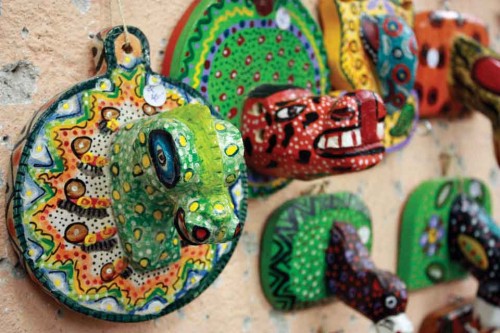
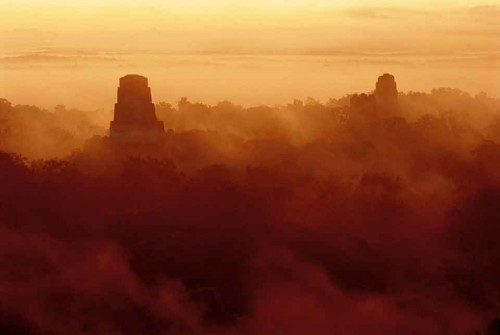
Wonderful story, well told and entertaining.
Very interesting part about the talking parrot nahual in history and defined a future for the recounting.
Greetings from an apprentice the secrets of nahual. 😉
—–
Maravilloso relato, bien narrado y entretenido.
Muy interesante la parte sobre que el nahual guacamaya habla en la historia y definía un futuro para el que relataba.
Saludos de un aprendiz de los secretos del nahual. 😉
How does one go about determining what their nahual is?
@Margaret, if you’re in Facebook, you can try the “Los Nahuales” application which will provide with all sorts of information. Here’s the direct link to the “Los Nahuales” in FB – http://www.facebook.com/nahuales
Your animal spirit has to manifest itself to you, either in dreaming or a visionary experience often comes like a force from within and you will feel you body has acquired characteristics of such an animal.
what is my nahaul animal if i was born in november
Pingback: Why has there been so much speculation about the Mayan 2012 calendar? | Revue Magazine